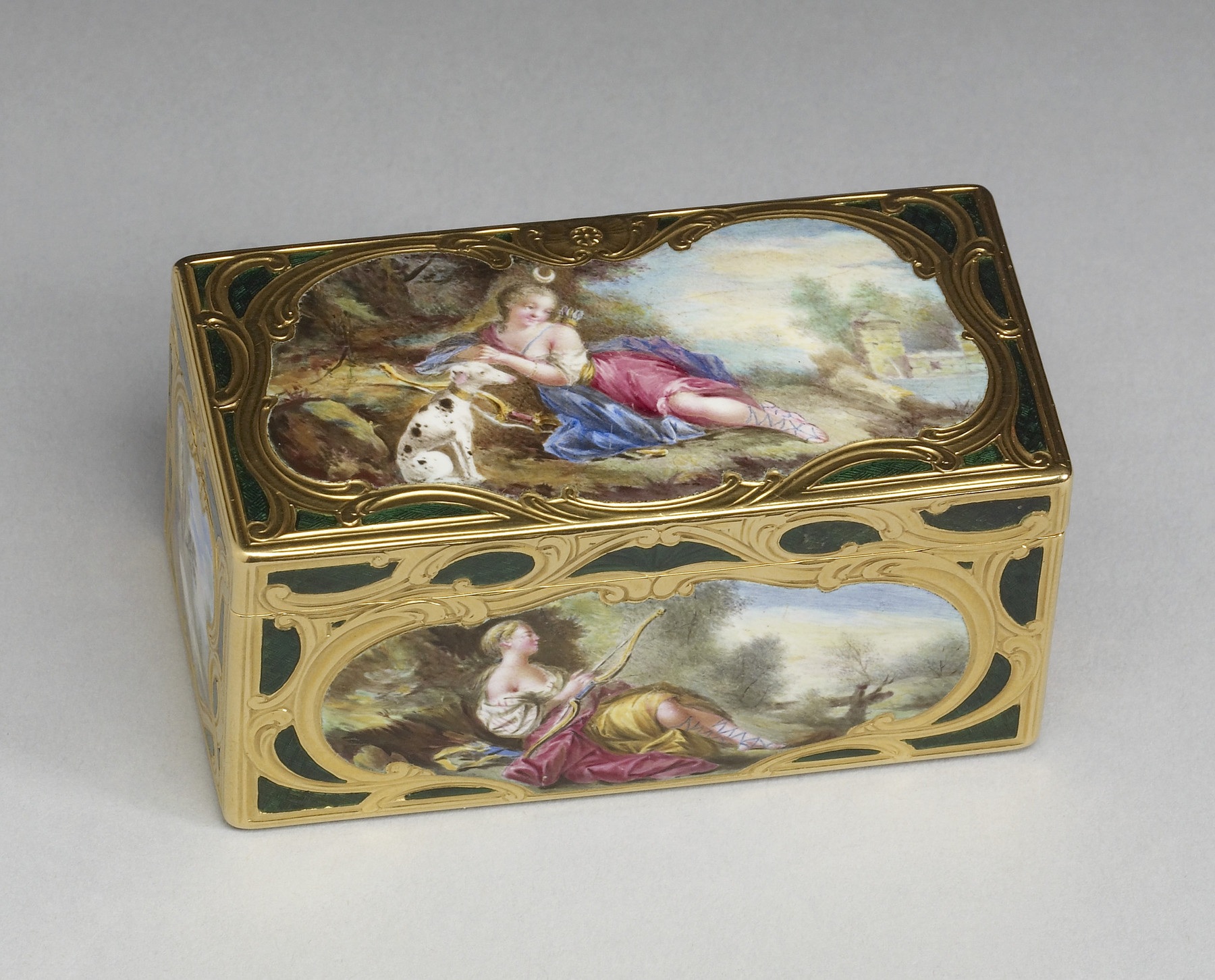Rectangular Snuffbox
(18th and 19th Centuries )
Originating in the Americas, the practice of “taking snuff,” or inhaling pulverized tobacco through the nose, became a common European custom by the 17th century. Consumers of all social levels and of both sexes would carry small, airtight boxes filled with the powdered tobacco, taking a pinch whenever they needed. Over time, however, society’s elites began to purchase and commission increasingly extravagant and precious boxes. Kings and Queens would often present snuffboxes to ambassadors as diplomatic gifts and to courtiers as payment for services. Made of a variety of precious materials, including gold, enamel, semiprecious stones, lacquer, and tortoiseshell, snuffboxes were coveted and enthusiastically collected. Displaying one’s collection of prized snuffboxes or stylishly retrieving an elegant box from one’s pocket were important social rituals; these objects revealed a person’s tastes, interests, and erudition. Each side of this snuffbox features a panel enameled en plein – or without boarders or compartments to contain the enamel –framework of chiseled gold and translucent guilloche enamel. The panel on the cover represents Diana resting after the hunt. Various beasts and a reclining nymph with bow appear elsewhere on the body of the box.
Inscription
Provenance
Provenance (from the French provenir, 'to come from/forth') is the chronology of the ownership, custody, or location of a historical object. Learn more about provenance at the Walters.
Collection of Charles J. Wertheimer (date and mode of aquisition unknown); Sale, Christie's, London, May 8 1912, no. 34; purchased by George Harding, London, 1912 (?); purchased by Henry Walters, Baltimore, 1914; by bequest to Walters Art Museum, 1931.
Exhibitions
| 2015-2016 | Pearls on a String: Artists, Patrons, and Poets at the Great Islamic Courts. The Walters Art Museum, Baltimore; Asian Art Museum, San Francisco. |
Conservation
| Date | Description | Narrative |
|---|---|---|
| 6/8/2015 | Examination | The snuffbox was examined prior to exhibition in Pearls on a String, fall 2015. The painted enamel panels are abraded, especially on the bottom from past use. Several small areas of the green bastaille enamel have been lost and filled in the past. |
| 6/8/2015 | Examination | Examined for exhibition |
Measurements
Closed H: 1 1/4 × W: 2 1/2 × D: 1 1/4 in. (3.1 × 6.3 × 3.1 cm)
Credit Line
Acquired by Henry Walters, 1914
Location in Museum
Not on view
Accession Number
In libraries, galleries, museums, and archives, an accession number is a unique identifier assigned to each object in the collection.
In libraries, galleries, museums, and archives, an accession number is a unique identifier assigned to each object in the collection.
57.60




